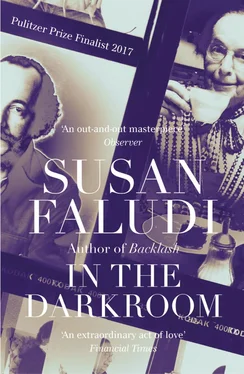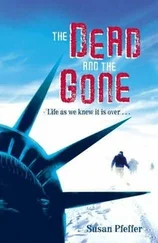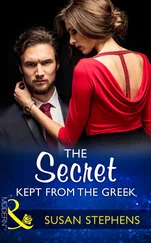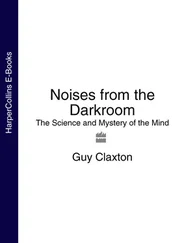That fall, there ensued a series of tense standoffs over The Dress. My father would demand I put it on in the morning before school. I’d wait until he left for work, then run upstairs and change. He caught me once in suburban mufti. I was ordered to wear the costume to school the next day, which I did in a state of high mortification. Eventually he lost interest, and I banished the dress to the back of my closet. A year or so later, with hippie garb in vogue, I dug the offending garment out from its purgatory, detached the embroidered chemise from the rest of the outfit, and paired it with acid-washed jeans. It was my attempt at an au courant peasant look. Which was about as “authentic” as my father’s Hungarian folk fashions.
The visual chronicle of this vacation resides in a stack of Kodak carousels that my father kept for the rest of her life in an attic closet, slide after slide of my mother and me and my brother in the shadow of Gothic cathedrals and castle ruins, leaning against the rails of a Danube cruise boat, waving from a train at a saluting Pioneer scout in starched uniform and red neckerchief, or staring up at the mammoth Hungarian Parliament topped by a red star. We often face away from the camera. Many of the shots are taken from a distance, as if my father were on safari, tracking a fleeing herd.
On that long-ago trip we took a break from sightseeing one day to visit two apartment buildings in Pest, fin de siècle Vienna-Secession edifices once grandly appointed, now derelict and coated in soot. Tatty shutters hung catawampus over the graceful arched windows of Váci út 28; the ceremonial balconies of Ráday utca 9 were visibly rotting. At Ráday 9, we climbed a set of dimly lit stairs to knock on a door. And toured a series of high-ceilinged rooms, partitioned now with plywood boards, shabbily furnished and overflowing with tenants, several families jammed into living quarters meant for one. I remember especially my father’s distress. This building, like the other one, once belonged to my grandfather. The flat was my father’s childhood domicile, the “royal apartment.” On the sidewalk again, my father looked back up at the dingy facade of Ráday 9, where a blond girl in a white hair ribbon peered down from a crumbling double balcony, the one attached to the opulent rooms where a boy named Pista had grown up. He took a photograph. It was the last frame on the roll.
In 1940, when Pista turned thirteen, he’d received a Pathé 9.5mm movie camera. It was a bar mitzvah gift from his father. From then on—in Hungary where he joined an amateur film society during the war and a youth film club right after, in Denmark where he started a movie-distribution business, in Brazil where he made documentaries in the rain forests and on the pampas—my father would continue to prefer the moving picture over the still one. “With photography, you get one chance,” my father told me once. “You’re stuck with that shot. With film, you can cut it up and change it all around. You can make the story come out the way you want it.”
For a brief time in my infancy, my father’s filmmaking enterprises were domestic. In a box in my cellar, I possess the results, salvaged from a trash can, where my mother had relegated them after the divorce. A set of metal canisters holds the reels of the 16mm home movies my father had made from 1959 to 1961, the two years following my birth. My parents and I were living then in Jackson Heights, Queens, in a tiny upstairs rental in a brick duplex, and the films record the banal milestones of newlywed life: my mother large with child and eating pizza in her third trimester, my mother pushing a baby stroller and washing diapers in a plastic bucket, my first birthday, my first day at the beach, my first Easter Parade and Christmas. The “director,” as my father listed himself in the credits, makes an occasional appearance. In a shot filmed with the aid of a tripod, my father poses just inside the front door of our apartment, impersonating the man he aspired to be. He is wearing a suit and tie, a herringbone coat, leather gloves, a fedora. His gaze is trained on the camera. He leans over to give my mother an awkward peck on the cheek. Then he gives a stagy wave and mimes something in the direction of my mother, his eyes still fixed on the lens, and heads out the door. It’s a silent film, but I can script the “Father Knows Best” voice-over.
The longest reel is dedicated to Christmas. The camera lingers on the tree—reverential close-ups of frosted ornaments, tinsel strands, a large electric nativity star. Then a slow pan over the three red-and-white-striped stockings tacked to the wall in descending order. Poppa Bear, Mama Bear, Baby Bear. And finally the ceremonial unwrapping of the gifts: my father holds up each of his to the camera—tie, striped pajamas, Champion Dart Board. He mugs a forced grin and mouths, “Just what I wanted for Christmaaas!” My mother sits cross-legged on the floor in a ruffled blouse and pleated skirt, staring at her gifts with a wan expression: apron, bedroom slippers, baby-doll nightie.
In the final minutes of “Susie’s First Christmas,” the camera shifts to an eight-month-old me, wobbling to a precarious standing position before the full-length hall mirror, baby-fat fingers scrabbling along the slick surface for a purchase. I press my nose and then crush my whole face against the mirror, as if searching for something behind the reflection. What the film hid, I thought as I watched it decades later, was my father. Who was nowhere more absent than in the brief moments when he appeared on-screen, surrounded by the props of his American family, parading an out-of-the-box identity before the camera, splicing himself, frame by frame, into a man whose story had been replaced by an image, an image of anyone and no one.
By then, he was working in a darkroom in the city, commuting to a windowless chamber that would become as thoroughly his domain as our suburban basement. He became a master of photographic development and manipulative techniques: color conversions, montages, composites, and other transmutations of the pre-Photoshop trade. “Trick photography,” he called it. He always smelled of fixer.
My father was particularly skilled at “dodging,” making dark areas look light, and “masking,” concealing unwanted parts of the picture. “The key is control,” he liked to say. “You don’t expose what you don’t want exposed.” In the aquarium murk where he spent his daytime hours, hands plunged in chemical baths, a single red safelight for navigation, he would shade and lighten and manipulate, he would make body parts, buildings, whole landscapes disappear. He had achieved in still photography what he had thought possible only in film. He made the story come out the way he wanted it to.
His talent made him indispensable in certain quarters—most notably in Condé Nast’s art production department. From the ’60s to the ’80s, Condé Nast relied on my father to perform many of the most difficult darkroom alterations for the photography that appeared in its premier magazines, Vogue , Glamour , House & Garden , Vanity Fair , Brides . For years a note that one magazine art director had sent to another hung in my father’s studio: “Send it to Steve Faludi—don’t send it to anyone else!” My father performed his “tricks” on the work of some of the most celebrated fashion photographers of the time—Richard Avedon, Francesco Scavullo, Irving Penn, Bert Stern—at several commercial photo agencies and, later, on his own at his one-man business, Lenscraft Studios, in a garment-district loft previously occupied by fashion photographer Hank Londoner. He also worked his magic on many vintage photographs whose negatives had been lost; he could create a perfect copy from a print. Among the classic images he worked on were those by the preeminent Hungarian photographer (and World War II Jewish refugee), André Kertész. My father’s handiwork “was so precise and close and meticulous, there would be no bleeding of color or light,” Dick Cole, the director of Condé Nast’s art production department in that period, told me many years later, as we sat in his living room in Southern California, leafing through glossy coffee-table books that featured my father’s artifice. “It was amazing. You could never tell what had been changed. You couldn’t tell the original from the copy.”
Читать дальше












